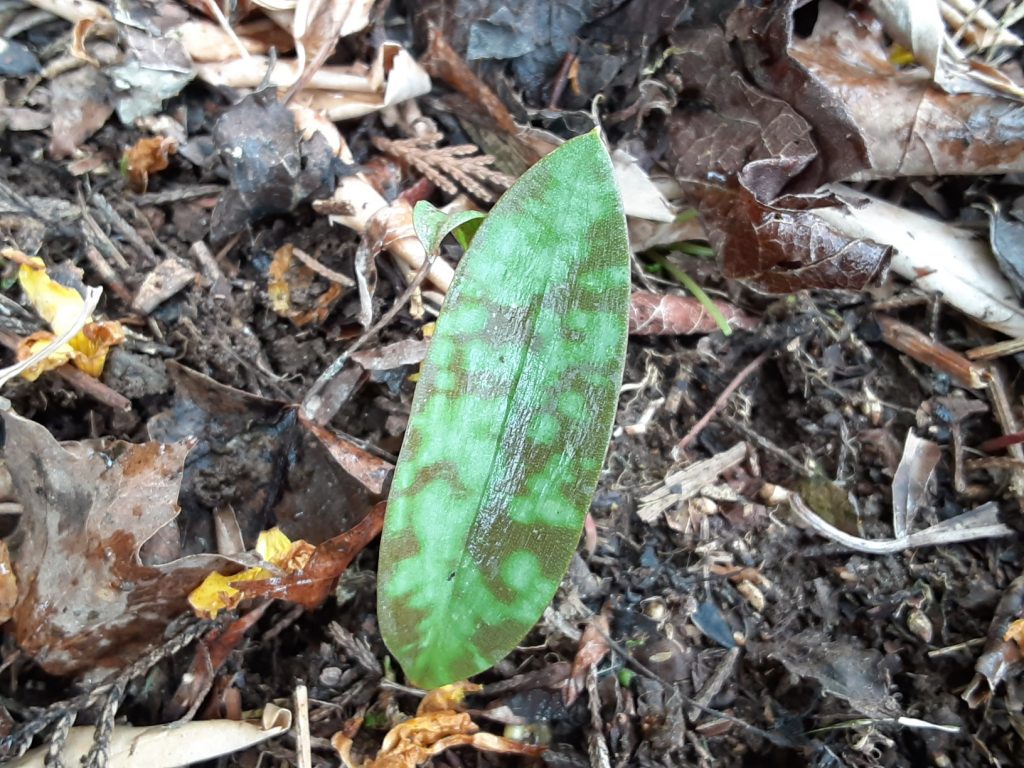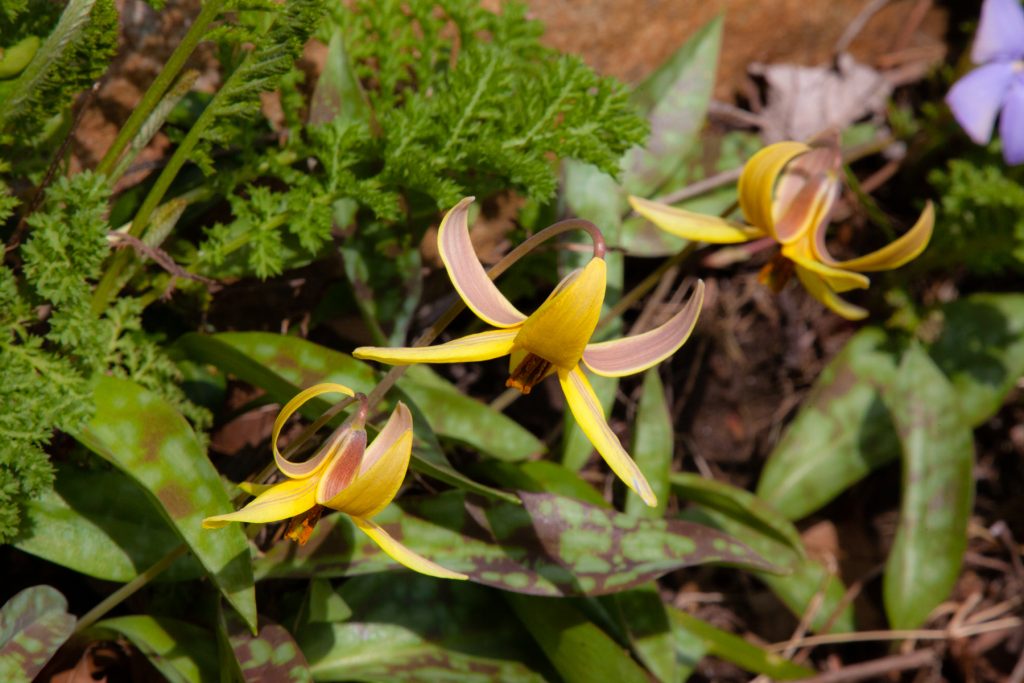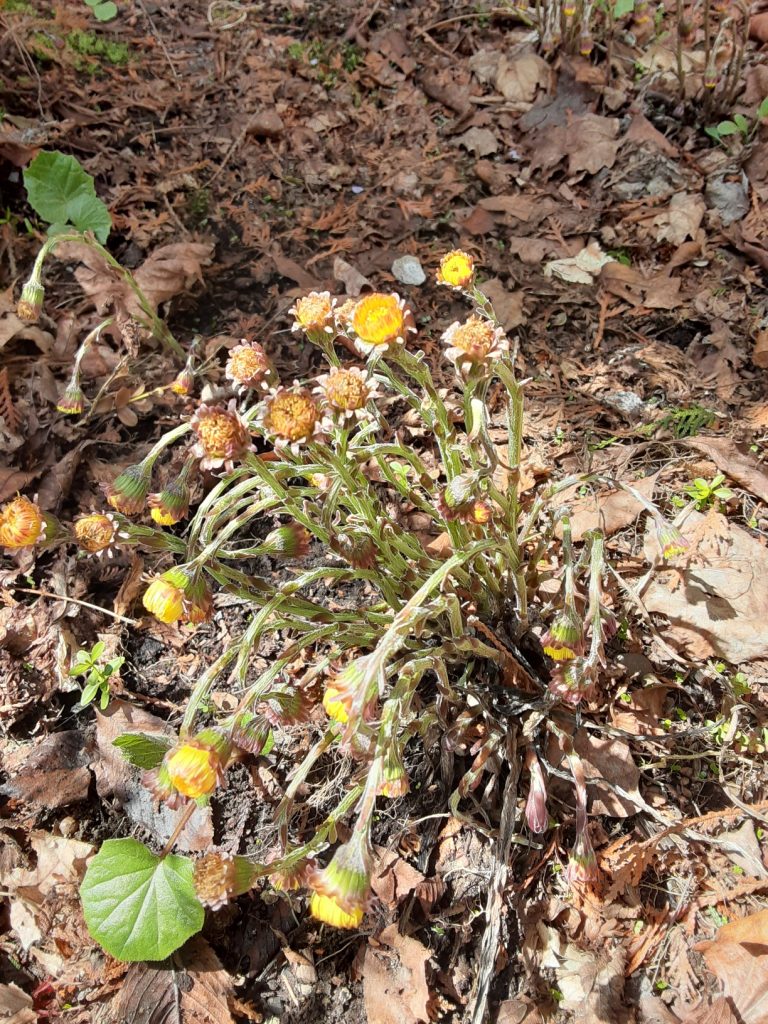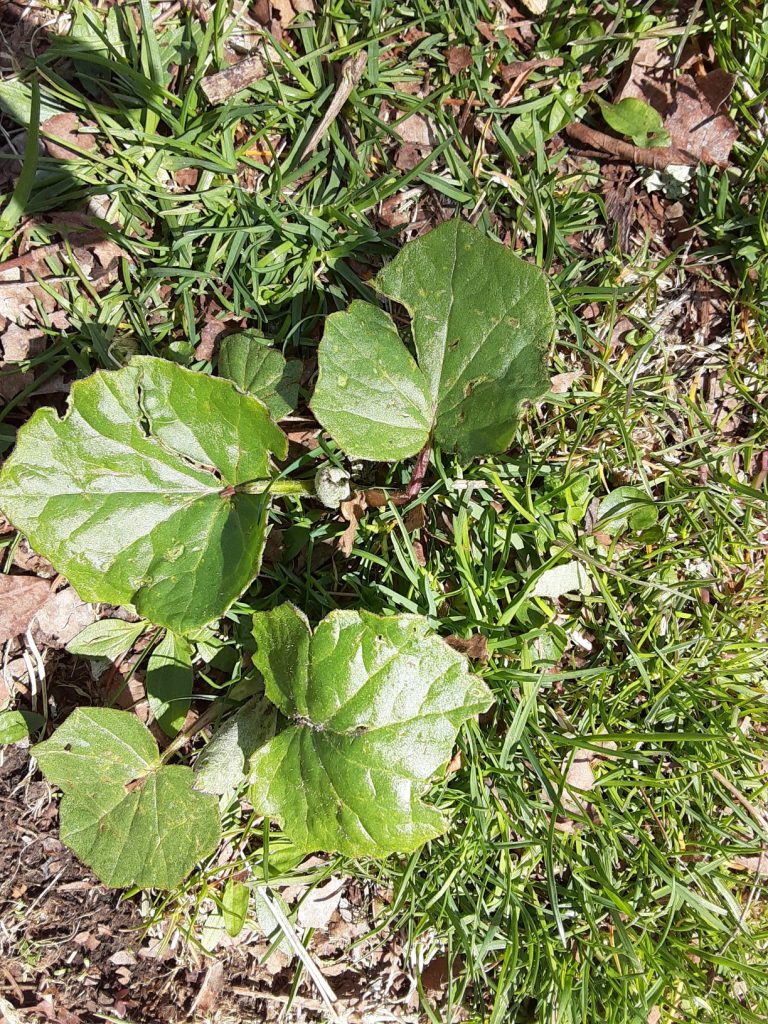By: Susan Sprout
We hope you enjoy this 2nd installment of Underfoot, by NPC member and environmental educator, Susan Sprout! Click here to catch up on the introductory issue of Underfoot.
Trout Lily
You know it’s time to go fishing in PA when the trout lilies bloom. Look for them as you slog in to your favorite trout stream. They will have a single or double leaf depending on how long they have been growing. And those leaves are speckled and shaped just like the trout you seek, but smaller.

Trout lily colony 
Trout lily leaf
They do not flower for the first four to seven years of life. So, if you see a yellow flower nodding on an erect stalk coming up from the leaves, enjoy its loveliness. It’s been there awhile! Also known as dog-toothed violets, they grow in colonies from underground bulbs which are reported to be edible. I have seen them push up in the spring through sand piles left from high water in the riparian buffer zone of Muncy Creek, my favorite fishing spot.

Coltsfoot
In early spring, you may see yellow dandelion-like flowers coming straight out of the soil on scaly stems with no leaves showing at all. You have found young coltsfoot plants. Another nickname “Son before Father” indicates just that…flowers before leaves! After the flowers fluff their seeds like dandelions, members of the same Asteraceae Family, the hoof-shaped leaves with rather furry undersides will begin to emerge.

Coltsfoot flowers 
Early coltsfoot leaves
This plant is common from Newfoundland south and west to Minnesota. Our intrepid colonial ancestors saw to that! Not knowing what plants they would find when they landed in the New World, they brought its roots and seeds with them. Why is that? Coltsfoot has been regarded by many cultures for thousands of years as one of the best remedies for coughs and congestion. Its leaves were a very important part of the early American “Doctor Mom’s” medicine chest.
Susan Sprout is a retired school teacher who continued teaching after retirement at Montour Preserve helping teachers of handicapped students with nature walks, at the National Shell Museum as a curator of the fossil collection, and as teacher of Shell Studies at the local school on Sanibel Island. Based on her love and study of plants, she does living history presentations of medicinal plants used by Native Americans, colonial immigrants, and people living during the Civil War. Both she and her husband, Richard, serve as cannoneers with Thompson’s Independent Battery C PA Light Artillery. Sue has served on the Northcentral Pennsylvania Conservancy board in the past. The Sprouts have been Conservancy members for 29 years.

